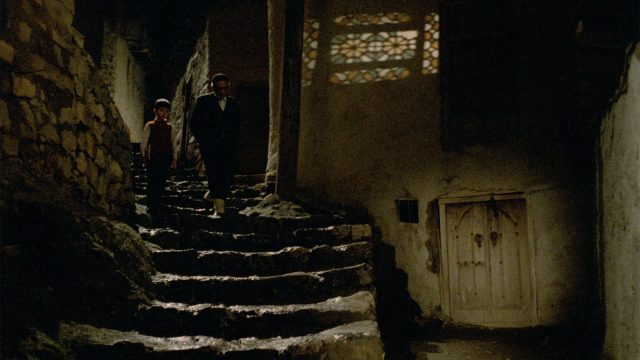Abbas Kiarostami made films with deceptively simple premises. A boy earns money taking pictures with a broken camera in The Traveler; a man looks for someone willing to bury him after he dies in Taste of Cherry; or a couple discusses the meaning of authenticity in the art world of Certified Copy. But all his films hide a complexity that repays a viewer who’s willing to face it — from the deconstruction of the “film rules” in Close-Up to the ever-evolving emotional complexity of Like Someone in Love. Kiarostami was a director who knew how to combine two completely different things and see how they could talk to each other: be it documentary and fiction in Close-Up, reality and forgery in art and in love (Certified Copy), or the stillness of photographs and the movement of movies with his last film, 24 Frames.
This may sound like a template for difficult films to like, but you just need to watch Where Is the Friend’s House? to see the care and compassion that Kiarostami worked into his films. Here is the story of Ahmad Ahmadpour, a boy who takes a classmate’s notebook by mistake and needs to return it so his friend won’t be expelled for not doing his homework.
Where Is the Friend’s House? does not stray from that simple premise, and it follows Ahmad closely in his various attempts to find his classmate. He zigzags between the villages of Koker and Poshteh, meeting people who point him in various directions. Some are keen to help, others don’t seem to care that much where they send the child. Some don’t even believe in his mission, or the importance he sees in it.
Underneath that simplicity, Where Is the Friend’s House? continually reveals the beauty of everything that can happen in a single day — the happiness, the sadness, the worries, and the gifts of everyday life. I always forget about one or another detail of the lives that Ahmad crosses on his journey, and the film is always willing to show each of them with the same affection and curiosity.
For example: in the opening scene, in the classroom, one of the students is hiding under the desk because of his back pain. The teacher doesn’t believe this story, and I thought it was a lame excuse (I’ve probably used this one myself multiple times). But Ahmad runs into that classmate later, and we can see the reason for his back pain: carrying heavy jugs for his father at work.
Where Is the Friend’s House? is doing that all the time, on every level: there’s always some detail in the image that will reward a viewer who happens to be looking at it, right up until its last frame. It is a sort of two-way care: first for its characters, who have the dignity of being well-drawn, and not just stereotypes; and second for the viewer, inspiring them to be as curious and as thoughtful as Ahmad. It’s a small movie in scale and duration, but with enough space for everyone who appears in it and everyone who wants to watch it.
Abbas Kiarostami said that the future of cinema will be a film that can be a hundred other films — a different film for each viewer, who will fill in the gaps left by the director with their own eyes. This line is often referred to as the key to understanding the mysteries of his late films, like Certified Copy and Like Someone in Love, with their elusive and malleable narratives. But I also like to think it fits right in with all of his work, because it helps me understand why I keep coming back to this film again and again. Its images and premise are always the same. But there’s always something new in Where Is the Friend’s House?, ready to surprise me. It’s just one movie, but it feels like Ahmad is helping me to see much more in it.
My thanks to Sam Scott for the help in editing this piece.


